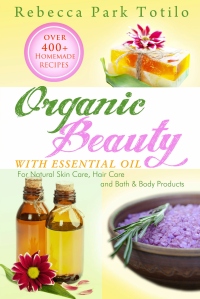
I never thought I would love The Diary of a Bookseller so much. I discovered Shaun Bythell ‘s book on Jen Campbell’s YouTube channel. She knew him because she interviewed him way back when she wrote The Bookshop Book. Possibly he was also a contributor to her Weird Things Customers Say in Bookshops. Shaun Bythell is the owner of Scotland’s largest secondhand bookstore. His shop has over 100,000 titles. He’s famous for being more than a little cranky, a bit like Dylan Moran’s character in the TV series Black Books (if you haven’t watched that yet, do yourself a favour and watch it. It’s so, so funny). If you read the diary, you’ll agree, that he has reasons for being cranky. My goodness. It’s unbelievable what some customers do or say.
Initially, Shaun wrote this book for himself, to make sure, he didn’t forget what was going on in his life and his book shop. I’m glad he decided to make this public because it’s fascinating, charming, enlightening, and sobering, all at the same time. I learned many things, I had no idea about or didn’t know that much about.

Shaun Bythell’s shop, called The Book Shop, is located in Wigtown, Scotland. Wigtown, is the Scottish counterpart of the Welsh Hay-on-Wye. It too has numerous book shops and hosts book festivals that might be smaller than Hay-on-Wye, but sound just as vibrant and interesting.
Every day, Shaun wrote down how many online orders he got (and books he found in his labyrinthine shop), how many paying customers he had and how much he earned. It’s amazing how much these numbers actually convey. You realize quickly, that this is a very hard business and sales aren’t high.
He also describes all the many things that are part of his shop like buying new stock, assessing libraries that are for sale. He writes about his staff, his cat, his girlfriend, friends, and customers – nice, weird and rude ones alike.
His sense of humour is great, on the acerbic side, and his comments on staff and customers make for entertaining reading.
Although it’s funny and fascinating, the book has a melancholy side. The reader can’t shake off the feeling to read about a dying trade. Shaun Bythell may very well shoot a kindle and hang it up on the shop’s wall, he may curse amazon . . . all that won’t change a thing— people aren’t willing to pay much for used books, unless they are very rare. The book also ends on a melancholy note as he describes in the epilogue what has happened to him and friends and customers after he finished his diary, which covers 2014.
Some of the entries are a few pages long, others very short.
Thursday, 24 April
Online orders: 3
Books found: 3
An elderly customer told me that her book club’s next book was Dracula, but she couldn’t remember what he’d written.
Till total £160.70
14 customers
Most entries are about the shop and book selling/buying but there are many that are about Shaun’s life. Those are just as entertaining.
Here are some of the things I found interesting:
- Bestsellers aren’t worth a lot. Not even first editions as in many cases already the first editions exist in high numbers (e.g. Harry Potter)
- Books dedicated by famous authors or who were given by famous authors, have annotations by them, sell very well.
- Books on fishing and railways sell remarkably well.
- I learned a lot about book prizes. Apparently, until the 90s, book shops weren’t allowed to sell books cheaper than the publisher’s prize (Net Book Agreement). This has changed since then and especially big shops like Waterstones, and now amazon, make huge profits by undercutting the market. Before this change, shops were only allowed to discount faulty books. Many used a cunning method – they applied a red mark and declared the books to be faulty, which allowed discount prizes. As a teenager, when I didn’t have a lot of money, I often bought in such a discounter and always wondered why all those books were called faulty even though nothing was wrong with them, other than having a red line.
- There’s quite a lot about online used book sales on amazon that I found sobering and saddening. Because of the system that’s used, books may suddenly be much cheaper than the seller intended. Some crafty people use the system and enter nonexistent cheap copies of expensive books to get prizes down.
Even though Bythell’s life doesn’t sound easy – customers can be annoying – book boxes are often far too heavy – the shops’ always cold – it still sounds charming and in many ways like a lot of fun. After all, he’s his own boss, is surrounded by books, meets some great people through the shop and the festival, and there’s always the possibility he might find some hidden treasure somewhere in a library.
I thoroughly enjoyed this book. It gives insight and entertains and put me in the mood to travel to Wigtown some day.








